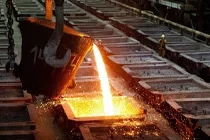Nov . 08, 2024 10:15 Back to list
Exploring the Role of Recarburizers in China's Coal Industry and Their Applications
The Importance of China Coal Recarburizer in the Steel Industry
The steel industry is a fundamental sector in modern economies, driving technological advancements and infrastructure development. One of the pivotal components in steel production is recarburization, a process that involves increasing the carbon content in steel to improve its properties. In this context, China coal recarburizer has emerged as a key player, influencing both the efficiency and quality of steel manufacturing.
Understanding Recarburization
Recarburization is necessary because the steel-making process, especially during the conversion of pig iron to steel in furnaces, can result in a significant loss of carbon content. Carbon is vital in creating the right balance of hardness, strength, and ductility in steel. Recarburizers serve to replenish this lost carbon, enhancing the steel's overall performance. Various materials are used in recarburization, but coal-based recarburizers have gained prominence due to their effectiveness and availability.
The Role of Coal-Based Recarburizers
China is one of the largest coal producers in the world, and as a result, it has been able to supply substantial quantities of coal-based recarburizers. These materials are derived from high-quality anthracite or coke, known for their high carbon content and low impurities. The intrinsic properties of coal recarburizers make them ideal for steel production. They are not only economical but also efficient in helping steel manufacturers achieve the desired carbon levels without introducing harmful contaminants.
Advantages of Using China Coal Recarburizers
1. Cost-Effectiveness The wide availability of coal resources in China allows for competitive pricing of recarburizers. This economical aspect is crucial for steel manufacturers who are constantly looking to reduce production costs while maintaining quality.
china coal recarburizer

2. High Carbon Content Coal recarburizers often boast a carbon content exceeding 85%. This high purity level ensures that manufacturers can achieve precise carbon adjustments in their steel products, leading to improved mechanical properties.
3. Improved Process Control Utilizing recarburizers sourced from reliable suppliers allows for better control of the steel-making process. This control translates into consistent quality and uniformity in the final steel products.
4. Environmental Considerations Despite the mining and processing of coal raising environmental concerns, advancements in technology are mitigating some of the ecological impacts. Industries are also exploring ways to decrease carbon emissions when utilizing coal-based products, thereby aligning with global sustainability goals.
Challenges and Future Prospects
While the use of coal recarburizers in China has been beneficial, challenges remain. The environmental impact of coal mining and its contribution to pollution are significant issues that the industry faces. As global regulations tighten and consumers become more environmentally conscious, there is an increasing push for greener alternatives. Research and development into alternative carbon sources, such as bio-carbons, are gaining traction, and some manufacturers are beginning to integrate these materials into their processes.
The future of coal recarburizers in China's steel industry will likely involve a blend of traditional methods coupled with innovative technologies aimed at reducing carbon footprints. For instance, enhancing recycling processes within steel production can significantly diminish the need for additional recarburization materials, thereby promoting sustainability.
Conclusion
In conclusion, China coal recarburizer plays an indispensable role in the steel manufacturing sector due to its cost-effectiveness, high carbon content, and improved control over the recarburization process. As the industry navigates the path towards sustainability, the adoption of innovative solutions, alongside traditional coal sources, will shape the future landscape of steel production in China and beyond. Maintaining the balance between efficiency, quality, and environmental responsibility will be the cornerstone of success in this evolving industry.
-
Eco-Friendly Granule Covering Agent | Dust & Caking Control
NewsAug.06,2025
-
Fe-C Composite Pellets for BOF: High-Efficiency & Cost-Saving
NewsAug.05,2025
-
Premium Tundish Covering Agents Exporters | High Purity
NewsAug.04,2025
-
Fe-C Composite Pellets for BOF | Efficient & Economical
NewsAug.03,2025
-
Top Tundish Covering Agent Exporters | Premium Quality Solutions
NewsAug.02,2025
-
First Bauxite Exporters | AI-Optimized Supply
NewsAug.01,2025
